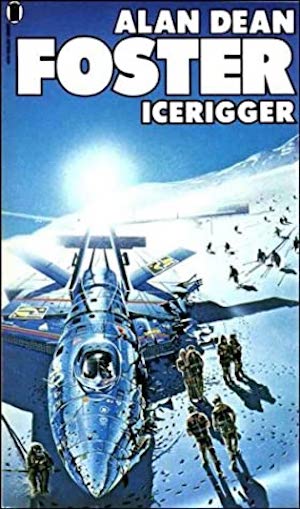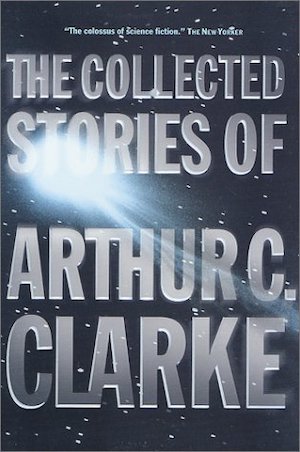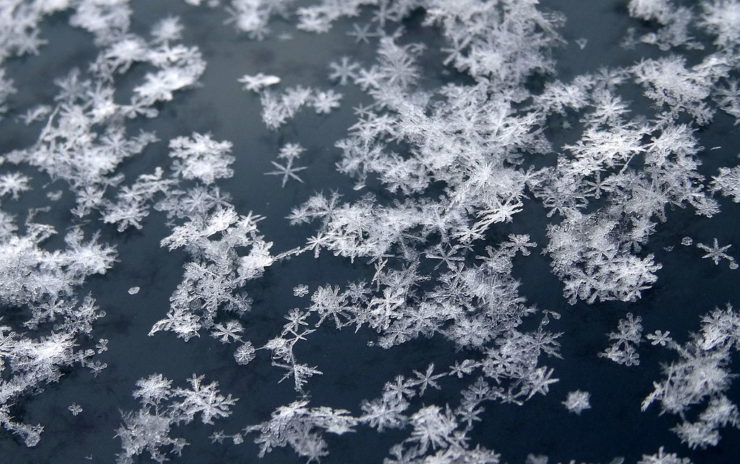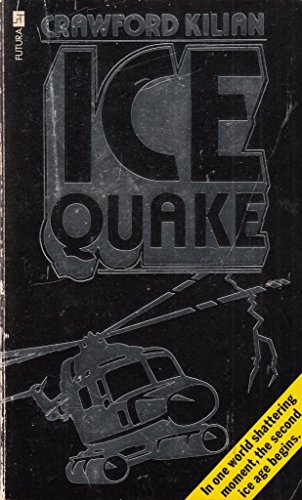There’s nothing quite like walking a kilometer and a half in 30° C—80° F—heat (almost 40°—104° F, allowing for humidity) while carrying a large sack of potatoes1 to make one think of winter. Which, don’t get me wrong, will be bitterly resented when it arrives—but at least it will be cooler than it was today.2
Which set me to thinking about delightful stories set on cooler worlds.
Our Lady of the Ice by Cassandra Rose Clarke (2015)

Some might call building an amusement park in Antarctica visionary. Others might call the scheme deranged. While Hope City hardly grew into the Paris of the South, it did succeed in firmly establishing Argentina’s claim to Antarctic territory. Economic success can be a side-issue to nationalism.
Not that patriotism keeps Hope City’s unfortunate inhabitants any warmer. Although the community does have an export—atomic power—Hope City’s economy is threadbare. Its inhabitants remain because they cannot afford to leave.
Mr. Cabrera’s business model requires denying any alternatives to Hope City’s trapped population, the better to exploit them. Marianella Luna’s covert bid to displace imported food with local produce endangers Cabrera’s income. Luna’s ambition to free Hope City is intolerable, and Luna has a secret which if exposed will ruin her. Unfortunately for Cabrera, Luna also has allies with their own goals for Hope City.
***
Dendera by Yuya Sato (2009)

The Village condemns its inhabitants to decades of back-breaking labour, lethal pestilence, food shortages, and all the other concomitants of isolated rural poverty. But there is a reward waiting for those who somehow survive the Village’s never-ending challenges. At age seventy, villagers are sent off on a mid-winter trek up the mountain that dominates the local landscape, where paradise awaits.
Kayu Saito doesn’t find paradise at the end of her trek. Only a mountain retreat, Dendera. It was founded thirty years earlier by Mei Mitsuya, Dendera was intended to be a refuge for the Village’s elderly women. In actuality, it offers only life of yet more hard labour.
Dendera’s reality falls far short of Kayu’s expectations, a disappointment about which Kayu is quite vocal. Mei does not care. Mei dreams of an army of elderly women who will slaughter everyone in the Village as retribution for their treatment of elders. If she can convince enough people, perhaps she can make her bloody dream real…
***
Threads (1984), script by Barry Hines, directed by Mick Jackson
In Thatcher-era Sheffield, Ruth Beckett’s unplanned pregnancy prompts sudden plans for a marriage between Ruth and beau Jimmy Kemp. The unexpected marriage places great strain on the couple. While Ruth plans a wedding, Jimmy cheats on her. The odds that the marriage will prosper appear quite dim.
Happily, the Warsaw Pact steps in to prevent the ill-fated union by dropping 210 megatons of nuclear explosives on the United Kingdom. Jimmy vanishes in the attack, presumably crushed, burned, or evaporated during the bombing. Ruth need never worry that Jimmy will someday abandon her.
Ruth navigates single motherhood alone in a United Kingdom quite unlike the one in which she grew up. The complex technological network on which she and other British people depended is gone. The new Britain is seared by UV-enhanced sunlight and chilled by nuclear winter. Ruth lives a full, rich life as a post-technological peasant before dying as an old woman of perhaps thirty.
***
Icerigger by Alan Dean Foster (1974)

Interstellar salesman Ethan Frome Fortune made one small mistake when he traveled to the desolate ice-world of Tran-ky-ky. He boarded the same starship as the fantastically wealthy and eminently kidnappable Hellespont du Kane, and du Kane’s daughter Colette. An attempted kidnapping ensues.
The kidnapping fails. A single kidnapper survives. He and his prospective kidnappee and several innocent bystanders (including Fortune) end up marooned on Tran-ky-ky.
The castaways are a diverse lot; at least one of them, adventurer Skua September, is suited to survival on a backward, frozen world. Other off-worlders could save them…if the stolen shuttle had not crashed on the other side of the world from the trading post.
Providentially, a nearby community of indigenes are willing to assist the odd-looking off-worlders. There is just one minor complication. Even now, a nomad horde is bearing down upon the town. Perhaps the off-worlders can help the desperate townsfolk repel the attack. If not, the humans will die alongside the townsfolk.
***
“The Forgotten Enemy” by Arthur C. Clarke

Cast into a planetary deep-freeze while traversing a dense cloud of cosmic dust, Earth cooled off rapidly. Realists fled Britain for now temperate equatorial regions. Professor Millward remained in London. Life in arctic London is hard but at least the professor has his beloved books.
Twenty years after his self-imposed isolation began, Millward witnesses animals fleeing south. Surely only humans could terrify wildlife so. Millward hears a great, seemingly unnaturally sustained thunder. Perhaps humanity is unleashing atomic fury to defrost the north. Or perhaps Millward is an optimist who gravely underestimates nature’s potential.
***
No doubt many of you have your own favourites, perhaps even books that are not Fallen Angels. Feel free to chill out in the comments with your own suggestions of books that might distract from the late summer heat. (That might work if you’re reading this in the northern hemisphere; if you’re not, sorry to make things worse.)
In the words of Wikipedia editor TexasAndroid, prolific book reviewer and perennial Darwin Award nominee James Davis Nicoll is of “questionable notability.” His work has appeared in Publishers Weekly and Romantic Times as well as on his own websites, James Nicoll Reviews and the Aurora finalist Young People Read Old SFF (where he is assisted by editor Karen Lofstrom and web person Adrienne L. Travis). He is a four-time finalist for the Best Fan Writer Hugo Award and is surprisingly flammable.
[1]Because I missed the bus and knew I could walk that distance in the time before the next bus arrived.
[2]Unless, ha ha, it isn’t.











Much of David Zindell’s Neverness and the trilogy which follows (titled A Requiem for Homo Sapiens[1]) is set on the titular planet, which is in such deep snowball mode that the locals call its warmest season “false winter”.
[1] Titles of short works go in quotes, titles of novels are italicized, but my school neglected to teach how to format titles of series. I want a refund.
I’d be remiss not to mention Gethen, from Ursula LeGuin’s The Left Hand of Darkness. There’s a reason the planet is more commonly known as Winter.
Mike Mullen’s Ashfall series has the US struggling under a forced winter after the eruption of the Yellowstone supervolcano fills the atmosphere with ash. Growing any crops (except kale, which the protagonists quietly groan about), even in makeshift greenhouses, is a struggle.
Anna Kavan’s Ice, where the world is steadily and inexorably being devoured by icebergs and icefields for reasons uncertain, while the nameless narrator chases the woman he’s obsessed with, so cold and dead inside that the looming freeze matters little.
And there’s always “Snowpiercer”. We all freeze and diiiiie!
The only thing that kept me from mentioning Ice is that I have never read it. It’s on the to-do list, though.
“A Pail of Air” by Fritz Leiber, which is set on a frozen Earth that has unfortunately wandered away from the Sun after an encounter with a wandering planet. It was one of my childhood favorites.
Barton and Capobianco’s Iris has a world so cold neon is a solid. The waste heat from terrestial explorer’s vehicles is enough to make the neon regolith evaporate around them.
Okay, I am a broken record. I love Jasper Fforde. Sue me.
But almost the entire narrative of Early Riser takes place the winter in a world where people hibernate because it is so damn cold and buried in ice and snow.
There’s a Larry Niven short called “Wait It Out” which sprang immediately to my mind….
Wasn’t there a short story about an ice-age tribe migrating southwards ahead of advancing glaciers, only to run up against glaciers advancing northwards?
Helliconia obv!
I remember Clarke’s short story, and I always wondered whether that’s really what it would sound like …
I’ve only just started Gene Wolfe’s Book of the New Sun (yes, @1, italicise it) series, and I get the impression it’s pretty chilly on old Urth.
And, of course, TV-wise, there’s the Twilight Zone episode, ‘The Midnight Sun’, in which — well, I’ll just leave it at that.
John Christopher, The World in Winter.
The just reviewed Helliconia Winter.
William R. Forstchen, Ice Prophet trilogy.
Niven and Pournelle, Fallen Angels.
Poul Anderson, The World in Winter.
(Matthew White, Your broken record song is in stereo, because I am singing it too.)
Scanning down the titles in this article, I was surprised “Early Riser” was not on the list. The author must not have read it. Usually I read these tor articles for book suggestions. Now I can return the favor – James Davis Nicoll, read Early Riser, it’s TERRIFIC!
Kim Stanley Robinson’s Antarctica
John W. Campbell’s “Who Goes There?” or any of the films derived from it.
Rene Barjavel’s The Ice People
HP Lovecraft’s At the Mountains of Madness
That’s four all set in Antarctica.
@3: Kavan was a remarkable writer and Ice is her masterpiece. It’s absolutely worth your time.
11) Thanks for mentioning Ice Prophet.
I have a book somewhere in my basement fitting this. Due to its structure, it could possibly be a fixup novel of short stories. I can’t remember the title or the author.
I’m going to put this on scifi.stackexchange.com next.
Very cold world. At least two humanlike species. One (call it Species K) lives in the “temperate” regions, the other currently (call it Species Q) lives in the icy regions. The latter is quite endangered, populations are disappearing.
Species K has never invented writing. Supposedly neither has Species Q, although they have strings tied with knots that actually serve as writing. However, none of Species K knows this.
A myth about Species Q says they have three phases of life, but nobody alive has ever seen the oldest phase. The oldest phase is supposed to have strong psychic powers.
A youth of Species Q goes to visit a city of Species K, bringing many furs for trading. Some of these furs are from animals thought by Species K to be extinct.
A legend of species K says that a small population of species Q was migrated to another planet. A delegation from Earth happens to be visiting the cold world at this time, and the Species Q youth goes with them to visit this lost population. It turns out to be accurate, and he brings home a bride.
Back on the home planet, the youth and his bride return to the polar region. Something or other happens and the bride is killed.
Meanwhile, a band of Rememberers from species K somehow gets exiled and wanders north. The youth, who is no longer young but has actually entered the third phase of his life, takes them as his tribe and teaches them his culture.
A Song of Ice and Fire, anyone? At least the wilding parts and the Stannis parts in Book 5.
Several books in the Harry Dresden series, including Proven Guilty where Harry and a strike team mount a rescue mission for a captive in Queen Mab’s winter stronghold; plus Cold Days. .
Anybody remember the movie Quintet (1979) which takes place during a modern ice age?
A book immediately came to mind but I can’t dredge up either author or title. It was written by a woman, one who had a more famous science-fantasy work – that I remember – but when I try to come up with a name my brain insists it’s Julain May and it isn’t.
The novel is essentially dune on an ice world. There’s an inuit-inspired culture, and the planet (or its inhabitants) is somehow crucial to space travel. I dimly remember something to do with cracks in the ice being some sort of… metaphor? for the space travel method. Or perhaps it was more literal.
Lastly, I remember that it was mediocre.
If this rings a bell in anyone’s memory chime in.
Michael Scott Rohan’s trilogy, The Winter of the World (Anvil of Ice, Forge in the Forest, Hammer of the Sun) is an excellent and mythic treatment of the war between humanity and the powers of the Ice. Much myth, much lore, much war. Highly recommended.
Cold Welcome in Elizabeth Moon’s Vatta series. Lots of action, but also serious consideration of what is possible when it’s cold and you have limited rations.
Doris Lessing’s The Making of the Representative for Planet 8.
There are also her Mara and Dan books.
Michael Scott Rohan’s The Winter of the World series. The Ice is sentient, and malevolent.
Eisenhorn Xenos, a Warhammer 40k novel, begins on Hubris, a planet with an extreme elliptical orbit giving it an eleven month winter of sub zero temperatures and darkness which most of the population spends in suspended animation.
Ciaphas Cain (HERO OF THE EMPIRE) Frequently finds himself on ice planets, to the delight of his regiment of Ice Worlders from Valhalla.
The first part of The Vor Game by Lois McMaster Bujold where Miles is sent to Kyril Island.
Kim Stanley Robinson, Fifty Degrees Below.
HPL, “At the Mountains of Madness” (and the Poe story — “The Narrative of A. Gordon Pym” — on which it’s loosely based…)
Joan D. Vinge, The Snow Queen.
@10: Wait till you get to book 4. There you’ll see some real cold stuff.
Cat’s Cradle by Vonnegut. Ice-9, and so it goes….
@19 You are describing exactly the same book as I was in @16.
@29 Got up this morning and the name just popped back in my head, This Alien Shore by C. S. Friedman. I don’t think it was you book though.
Based on online descriptions I’m not even sure how important the ice world snd the inuit-esque people were important to the narrative.
@16 Sounds very much like John Morressy’s “Frostworld and Dreamfire”.
Shamen, by Kim Stanley Robinson, is set in Ice Age Europe. It has some great glacier and snow scenes, plus it’s a seriously bad-ass action story.
“Permafrost” by Roger Zelazny is a chilling story in more ways than one.
The Silver Warriors by Michael Moorcock.
And there was an ice planet called Hoth in some old science fiction movie whose title is escaping me.
Just for reference, 30°C is 86°F.
The Terror by Dan Simmons. Though it is really horror / fantasy rather than science fiction.
@30 you’re right, I’m sorry. I saw the word “Inuit” and jumped to conclusions.
@31 That’s it. Not available in ebook form — at least not in English; I did find traces of translations — but I found this review and I recognize both the cover and the elements of the story covered by the review.
@35 — the very name of the author causes sufficient horror to warn me away.
@35 RStreck
That is one hell of a book by one hell of a great author.
Just a bit off subject, but I saw a funny article a few days ago about what Winter looked like on the show GAME OF THRONES. An inch or two of fake snow, at most, in a lot of the scenes. That proves my theory that the area near the wall is the American South. I’m just stunned you couldn’t see bread and milk stashed everywhere, instead of Starbucks and bottled water, during these scenes because that’s what panic looks like with a dusting of snow.
“The Time of the Great Freeze” (1964) by Robert Silverberg, a YA set in the 27th century after the Earth has been encased in ice for several hundred years owing to some kind of cosmic catastrophe (the solar system passing through a galactic “dust cloud” obscuring the Sun, if I remember correctly). Humanity has been living in isolated, underground cities, and there are now indications the ice is melting, so people are venturing out on the surface to make contact with other groups.
A lot of frozen worlds (everything past Earth!) in Catherynne Valente’s excellent “Radiance.”
I believe 30 degrees C is more than 80 degrees F. :)
@34: Oops, didn’t see your comment before I said in 42 that 30C isn’t 80F. Oh well, at least I got to enjoy being 42!
The Wolf in the Whale, by Jordanna Max Brodsky. Polar peoples and first contact. Ice and gods.
The Petaybee trilogy by Anne McCaffrey and Elizabeth Ann Scarborough. Set on a planet that only has land masses in the polar regions, it is eternally arctic. It was settled generations previously by a mix of people relocated from Earth, mostly Irish and Inuit, resulting in a very interesting cultural fusion. And there’s something odd going on among those people, and the Company doesn’t like it…
The three books are Powers That Be, Power Lines, and Power Play. (There are sequels but not as good.)
Icequake by Crawford Kilian – scientists in a station in Antarctica are in trouble when the earth’s magnetic field flips at the same time that their ice sheet breaks free. Has sensible female characters who know their science.
Two of Doctor Who’s most iconic enemies, Cybermen and Ice Warriors, were introduced in decidedly chilly stories.
Also, another Michael Moorcock, The Ice Schooner.
From 2019 The Siberian Incident by Greig Beck. First contact gone horribly wrong. Features a frozen Lake Baikal, very strange aliens and the Russian mob.
Ian Rob Wright’s The Final Winter, horror/SF. A strange snow storm overpowers the UK, but the denizens within the storm are far more dangerous than the apocalyptic weather.
Fallen Star (Project Gauntlet book 1) by Richard Turner. Another first contact gone wrong, plus warring secret factions. Takes place in Alaska.
Michael Cony’s Rax is about an alien species that dread cold weather. Indeed, it can even drive some to insanity. There are legitimate reasons to fear it (there is a creature that uses its ability to freeze water to capture its prey, analogous to a spider), but fortunately the weather cycle never lets it get too cold. Until one year there’s an unfortunate series of planetary events.
Hal Clement has Iceworld, where our hero has to investigate a terrifyingly cold world. One so frozen sulphur is a solid not a gas, and water exists in it’s super-chilled liquid form!
“The worst journey in the world”, Cherry Gerrard.
No Joan D. Vinge fans out there? The Snow Queen was a great book, along with its sequel, The Summer Queen.
The Left Hand of Darkness by LeGuin was on Gethen, which was pretty cold.
Also, Colleen McCullough did A Creed For the Third Millennium, which I read Because Thornbirds, and it kind of sucked. Fortunately she then produced the First Man in Rome series, which is pretty readable despite Julius Caesar’s inevitable ascension towards godhood.
Hayden Howard’s The Eskimo Invasion
I read the book ” Spinning Silver” by Naomi Novik when I need a cold weather type book.
Also the whole series by Katherine Arden “The Bear and The Nightingale” has Jack Frost as a main character, also the series has a spooky quality which is perfect for fall! Both books are Folklore type fantasy.
@@@@@ 51, Oh God Yes! Temperatures so cold that teeth shatter!and it’s right here on Earth.
“Spacehounds of IPC” has some cool aliens. So does James White’s “Sector General” hospital, if you visit their wards with your Translator switched off. Icy alien tinkling, very soothing. However, if you do listen – spoiler – it’s actually heated argument.